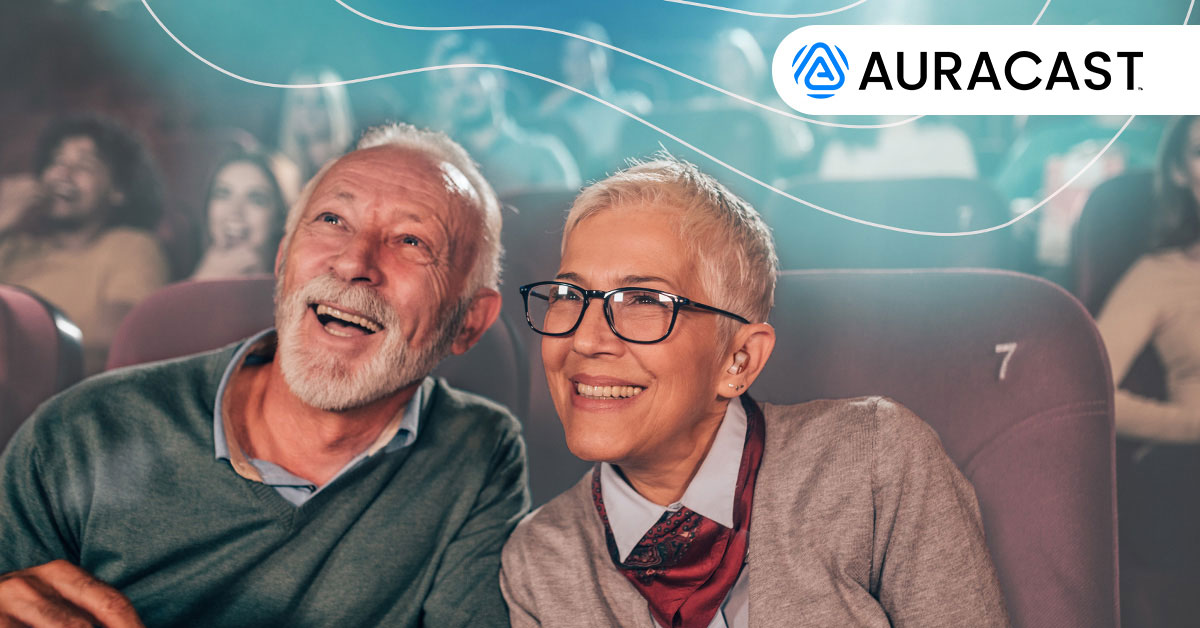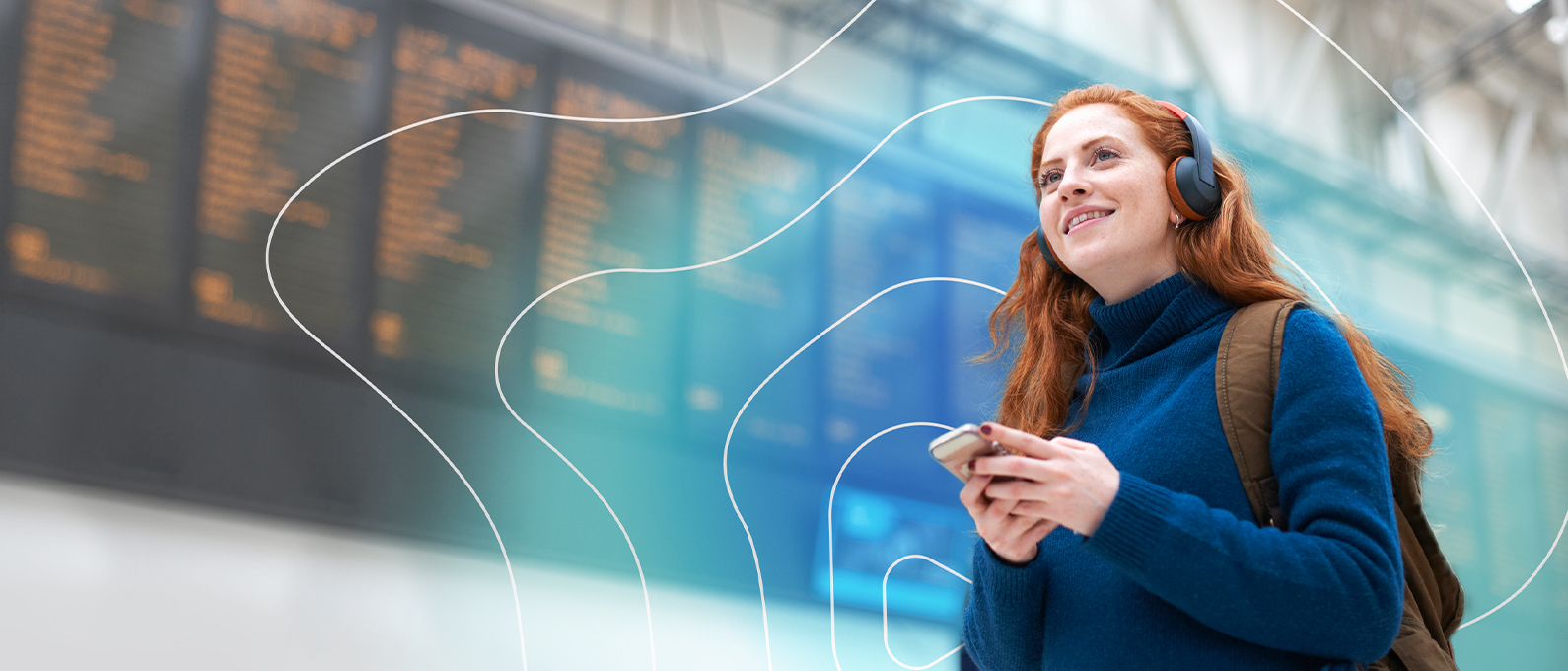Using Bluetooth Technology to Solve Assistive Listening ChallengesBluetooth技術で 聴覚補助の課題を解決する
|
At all life stages, communication and good hearing health connect us to each other, our communities, and the world. Public hearing assistance is critical for people with hearing loss. Background noise is a real challenge. One benefit of an assistive listening system is that it helps curtail background noise, allowing individuals to better access the sound source they want to hear, whether it is a speaker at a convention or a person at a service counter.
While current assistive listening systems (ALS) have provided great benefits to people with hearing loss, several challenges have hindered their deployment, including limitations in function and performance, the cost of installation and maintenance, and a lack of secure and private communications.
Assistive Listening Today
For years, three types of assistive listening systems have been used to support people with hearing loss: FM, infrared, and hearing loop systems. Though the sound quality can be good, FM and infrared systems require individuals to borrow a receiver from the venue. It is impossible for a user to bring their own device, and having to acquire a venue-specific device to gain audio accessibility can lead to feelings of stigmatization. Richard Einhorn, a consultant at Einhorn Consulting, LLC, noted that there are trade-offs to using FM and infrared systems, with the main one being that you must identify yourself as a person with hearing loss, which is typically undesirable for those with hearing loss.
“The exciting thing about Bluetooth® LE Audio, is that it addresses almost all, if not all, of the limitations of the current technologies.”
– Richard Einhorn, Einhorn Consulting, LLC
The third option is a hearing loop. Hearing loops are one of the more commonly used solutions to support hearing loss in public venues and are the closest thing to a standard for assistive listening. Telecoils built into hearing devices allow users to access a hearing loop without needing a separate receiver. Unfortunately, not all hearing aids have telecoils, and hearing device wearers are not necessarily aware that they have a telecoil in their hearing devices. In some cases, a telecoil is available in the hearing device, but it has not been programmed for use.
Hearing device users who have built-in, programmed telecoils find they are easy to use. A simple button push or flip of a switch on the hearing device provides access to the audio signal. But loop systems have several limitations. According to Einhorn, one disadvantage for the consumer is that the signal is in mono, and there are times when you want to listen in stereo. Another issue with hearing loops, Einhorn notes, is that unless the venue installed the hearing loop when the building was constructed, it’s extremely expensive to reconfigure the building for hearing loops.
Nick Hunn, CTO of WiFore Consulting, noted that hearing loops have several restraints. It can be expensive to install, and, to hear it, you must be within the confines of the loop. Because it’s a fairly expensive installation, availability is largely driven by a country’s regulations. The hope is that the addition of Auracast™ broadcast audio will help democratize access.
Jeff Solum, a wireless system architect with Starkey Hearing Technologies, points out that with Auracast™ broadcast audio, you can mount just a small gateway, like you would a WiFi modem in a home, classroom, church, or auditorium, and fill the entire space with a higher quality wireless audio. “The experience is going to be much better, much broader, and it’ll be deployed much faster when people start picking up the standard and deploying it,” said Solum.
Assistive Listening Tomorrow
Industry experts anticipate Auracast™ broadcast audio will become the next-generation assistive listening system. There’s a good probability that this will eventually come to fruition, but complete market saturation could take years, maybe even decades, to realize. In the interim, its ability to function in tandem with existing assistive listening technologies will enhance accessibility for a wider range of people with hearing loss.

The low cost of installing Auracast™ broadcast audio will be a big benefit. In many regions, legislation has driven the deployment of an assistive listening system. If systems can be deployed at a lower cost, the benefits they provide visitors in public spaces will incentivize venues to install them.
Thomas Olsgaard, VP of hardware platforms for GN ReSound, points out that hearing loop systems require a wire running through the walls, floor, or ceiling, meaning someone will have to install and maintain it. With Auracast™ broadcast audio, there is the option to put a broadcaster on the wall, hook it up, and it works – increasing ease of use.
Auracast™ broadcast audio will be highly reliable and relatively inexpensive to deploy, especially compared to the costs associated with a hearing loop retrofit. “The exciting thing about Bluetooth LE Audio,” according to Einhorn, “is that it addresses almost all, if not all, of the limitations of the current technologies. If you have a venue that supports Auracast™ broadcast audio, it is possible that Auracast™-enabled hearing aids can be designed so that all a consumer would need to do is flip a switch on their hearing aid just the way they used to do with loops, and they will be connected to stream it all.”
Until the technology becomes widely available and accessible, the coexistence of Auracast™ broadcast audio and existing assistive listening systems is critical for hearing aid users. The International Federation of Hard of Hearing People (IFHOH) recommends that manufacturers of hearing aids and cochlear implants continue to integrate telecoils into their products.
Recently, the IFHOH published a declaration that states, “it is important to have both telecoil and Auracast™ technologies in hearing aids and cochlear implants until most users will feel they can rely on Auracast™ broadcast audio.” IFHOH recognized that one of the most important and impactful promises of Auracast™ broadcast audio is to assist hard-of-hearing individuals to hear better in venues where hearing aids and cochlear implants are insufficient to function. The IFHOH said it “foresees a world where FM, infrared, and hearing loop systems (including those found in taxis, ticket counters, airports, theatres, etc.) will function for the foreseeable future alongside Auracast™ systems.”
Going Beyond Assistive Listening

Overcoming the challenges of traditional assistive listening technologies by using a familiar, proven technology ubiquitous in most consumer audio devices will provide the added benefits of enabling broader deployment and increasing the availability of assistive listening for people with hearing loss. It will also expand the applicability of this type of audio access to consumers with all levels of hearing health.
Rasmus Abildgren, principal engineer with Bose explains that with Auracast™ broadcasts, there is an opportunity to create an assistive listening system that can benefit not only those with hearing loss but also those who can’t hear what is being presented. Auracast™ broadcast audio is not only beneficial to those using hearing aids, it is also beneficial to the general public.
Public locations – including conference centers, movie theaters, transportation centers, places of worship, and more – will deploy Auracast™ broadcast audio to promote better living through better hearing for everyone. Linda Kozma-Spytek, consultant and professional adviser on technology to the Hearing Loss Association of America, notes that the concept of providing an interoperable, universal, and widely deployed service is something the hearing loss community has not really had access to with other assistive listening systems. “The existing solutions also form connectivity silos because they are separate from and incompatible with the wireless connectivity used with general consumer audio electronics. Removing those connectivity silos puts us on the path to more inclusive communication access for people with hearing loss,” said Kozma-Spytek. “Delivering ubiquitous, universal audio connectivity for people using hearing devices and mainstream audio products alike is now in the realm of possibility.”
どの年齢層であっても、コミュニケーション能力と耳の健康は何より欠かせません。人やコミュニティ、そして世界へつなぐ役割を果たしてくれます。難聴者にとって公共の場での聴覚補助は極めて重要であり、周囲の雑音は取り除きたい大きな問題と言えます。聴覚補助システムの利点の一つは周囲の雑音を抑えられることで、会議室の講演でもサービスカウンターの担当者の言葉でも、聞きたい音を聞き取りやすくできます。
現在の聴覚補助システム(ALS)は難聴者に大いに役立っていますが、機能や性能の限界、設置と保守にかかるコスト、セキュリティやプライバシーに対する不安など、いくつかの課題がその普及を妨げています。
聴覚補助の現在
難聴者を支援するための従来の聴覚補助システムには、FM、赤外線、ヒアリングループの3つのタイプがあります。良好な音質は可能であるものの、FMや赤外線タイプのシステムを利用するには、受信器を借りなければなりません。個人の受信器は使用できず、音声を聞くために会場で専用の受信器を借りる必要があることは、難聴をことさらに意識させる心理的な負担ともなり得ます。アインホーン・コンサルティング(Einhorn Consulting, LLC)のコンサルタント、リチャード・アインホーン(Richard Einhorn)氏は、FMと赤外線タイプのシステムを利用するためにはいくつかのトレードオフがあり、中でも最も大きいのは自分が難聴者であることを申し出なければならない点だと言います。一般的に、これは難聴者にとって望ましい状況ではありません。
第3の選択肢として、ヒアリングループがあります。ヒアリングループは公共の場でよく使用され、聴覚補助の標準に最も近い地位を占めています。ヒアリングループは補聴器に埋め込まれたテレコイルで利用できるため、別個の受信器を必要としません。残念ながら、すべての補聴器がテレコイルを備えているわけではなく、補聴器の利用者も自分の補聴器にテレコイルがあることを必ずしも知っているとは限りません。また、補聴器にテレコイルが内蔵されていても、利用できるようにプログラミングされていない場合もあります。
テレコイルが内蔵、プログラミングされた補聴器は簡単に利用できます。ボタンまたはスイッチを押すだけで、補聴器が音声信号を受信できるようになります。ですが、ヒアリングループも万能ではありません。アイホーン氏はひとつのデメリットとして、信号がモノラルであることを挙げています。音声はステレオで聞きたい場合もあります。また、アイホーン氏は、施設建設時にヒアリングループシステムを設置していない場合、後から設置するための改造費用がかなり高くなるという別の問題も指摘しています。
ワイフォア・コンサルティング(WiFore Consulting)のCTO、ニック・ハン(Nick Hunn)氏は、ヒアリングループにはいくつかの制約があると指摘します。設置が高価になりがちで、音声を聞くにはループの範囲内にいなければなりません。設置にかなりの費用がかかるため、普及状況は主に国の規則に左右されます。そこにAuracast™ ブロードキャスト オーディオが加わることによって、聴覚補助の広範な普及が進むことが期待されています。
スターキーヒアリングテクノロジーズ(Starkey Hearing Technologies)のワイヤレスシステムアーキテクトであるジェフ・ソラム(Jeff Solum)氏は、Auracast™ブロードキャスト オーディオの場合、小型のゲートウェイを家庭、教室、教会、講堂などにWiFiモデムと同じように備え付けるだけで、スペース全体で高音質のワイヤレスオーディオが利用できるようになる、と指摘します。「使い勝手が大きく向上してより広範に利用できるようになります。いったん規格の採用と普及が始まったら、早いペースで導入が進んでいくでしょう」
聴覚補助の将来
業界の専門家の多くが、次世代ALSはAuracast™ ブロードキャスト オーディオが担うだろうと予想しています。その実現の可能性は高いものの、完全普及までは何年も、場合によっては何十年もかかるかもしれません。それまでは、現行の聴覚補助技術と併用できるという側面から、幅広く難聴者の聞こえを支援していくことになります。

Auracast™ ブロードキャスト オーディオの導入コストの低さは大きなメリットになるでしょう。多くの地域で、聴覚補助システムの導入は法律によって促進されてきた面がありましたが、低コストでの導入がかなえば、公共の場で利用者に提供できる利便性が導入を促進していく要因となることが考えられます。
GNリサウンド(GN ReSound)のハードウェアプラットフォーム担当バイスプレジデントのトマス・ オルスガード(Thomas Olsgaard)氏は、ヒアリングループシステムでは壁、床、天井の配線が必要であり、そのため設置と保守管理が必要になると指摘します。Auracast™ ブロードキャスト オーディオの場合はブロードキャスターを壁に設置してつなぐだけ、という選択肢があり、簡単に利用できます。
Auracast™ブロードキャストオーディオは信頼性が高く、設置費用も、特にヒアリングループシステムを後から設置する場合に比べると抑えることができます。アイホーン氏は次のように述べています。「LE Audioに高い期待を持つのは、それが現在の技術のすべてとまではいかなくても、ほとんどの限界を解決しているからです。施設がAuracast™ブロードキャスト オーディオに対応すれば、Auracast™対応の補聴器を設計でき、利用者はヒアリングループの場合と同じようにスイッチを入れるだけで、音声ストリーミングをすべて受信できます」
この技術が広く普及し利用できるようになるまで、補聴器ユーザーにとってはAuracast™ ブロードキャスト オーディオと既存の聴覚補助システムが共存することが極めて重要です。国際難聴者連盟(IFHOH)は、補聴器と人工内耳のメーカーが今後も製品にテレコイルを組み込むことを推奨しています。
IFHOHは最近、「ほとんどの ユーザーがAuracast™ブロードキャスト オーディオのみでも大丈夫であると感じられるようになるまで、補聴器にはテレコイルとAuracast™の両技術を搭載することが重要」という声明を発表しました。IFHOHでは、Auracast™ ブロードキャスト オーディオに期待されることで最も重要で影響力が大きい点が、補聴器や人工内耳では対応しきれない場所での難聴者の支援であるとし、「しばらくの間はFM、赤外線、(タクシー、チケット売り場、空港、劇場などの)ヒアリングループシステムがAuracast™のシステムと並んで使用されると予想」しています。

聴覚補助の先へ
従来の聴覚補助技術の課題の克服には、確かな実績のある技術を採用することのほかに、多くの消費者向けオーディオ製品に搭載され慣れ親しまれている技術を使用すれば、幅広い普及を可能にして、難聴者が利用できる場面が増えます。同時に、あらゆる聴覚レベルの人々にも、このような音声の利用を拡大することができます。
ボーズ(Bose)の主席エンジニア、ラスムス・アビルドグレン(Rasmus Abildgren)氏は、Auracast™ブロードキャストオーディオによって、難聴者以外でも聞き取り難いときに利用できる聴覚補助システムが登場する可能性が生まれたと言います。Auracast™ブロードキャストオーディオは補聴器の利用者だけでなく、一般の人々にもメリットをもたらせるのです。
公共の場(会議場、映画館、公共交通施設、礼拝施設など)では、Auracast™ ブロードキャスト オーディオを導入することですべての人が音声を聞きやすくし、より良い暮らしを促進していけるでしょう。コンサルタントで全米聴覚障害者協会の技術アドバイザーを務めるリンダ・コズマ=スピテック(Linda Kozma-Spytek)氏は、相互運用性と汎用性のあるサービスを幅広く普及させるというコンセプトは、難聴者コミュニティにとってこれまで他の聴覚補助システムでは考えることができなかったと言います。「既存の聴覚補助ソリューションは一般消費者用のオーディオ機器に使用されているワイヤレス技術とは別の技術を使用し、相互運用性がないために、通信的に孤立した存在となっています。こうした孤立を解消することは、難聴者を置き去りにしないインクルーシブな通信への道を開きます。補聴器とオーディオ機器の利用者がどこでも同じように音声を利用できる通信環境は、もう実現可能な領域にあるのです」